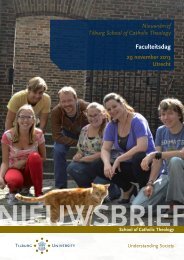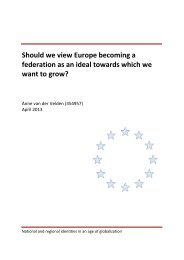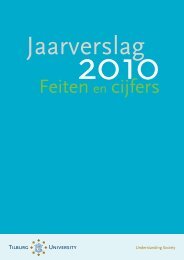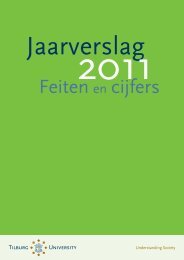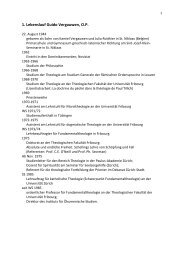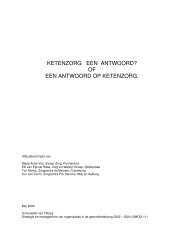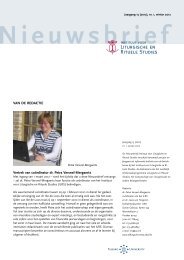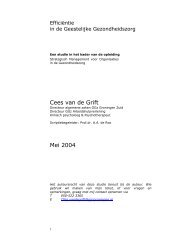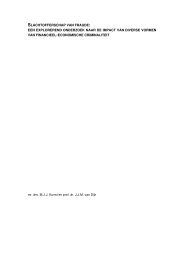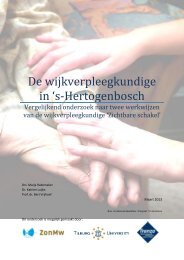Here - Tilburg University
Here - Tilburg University
Here - Tilburg University
You also want an ePaper? Increase the reach of your titles
YUMPU automatically turns print PDFs into web optimized ePapers that Google loves.
Author and presenter<br />
Meuleman, Bart; Catholic <strong>University</strong> Leuven<br />
Title<br />
When are item intercept differences substantial in measurement equivalence<br />
testing? An application on ESS data.<br />
Abstract<br />
Applied comparative researchers are becoming increasingly aware of the<br />
issue of measurement equivalence. By now, there exists considerable agreement<br />
on the concrete operationalization and implications of (the various levels of)<br />
measurement equivalence. Multiple group confirmatory factor analysis (MGCFA)<br />
has become widely recognized as a useful statistical tool to test for equivalence.<br />
In this framework, measurement equivalence is assessed by constraining certain<br />
parameters – e.g. factor loadings or item intercepts - across groups.<br />
Despite growing consensus, important issues in equivalence testing by<br />
means of MGCFA remain unresolved. One of the most compelling problems<br />
related to the specific criteria that should be used to decide whether an equality<br />
constraint is violated or not. Various authors warn against relying on statistical<br />
criteria alone, because due to the large sample sizes often used, even negligible<br />
differences between groups can become significant. Saris et al. (2009) suggest<br />
that one should only pay attention to substantial model misspecifications (i.e.<br />
with a high expected parameter change).<br />
Yet, how large should differences between groups be to be judged as<br />
substantial? This paper proposes a concrete strategy to predict whether<br />
differences in item intercepts will have perceivable impact on substantial<br />
conclusions drawn from latent mean comparisons. The proposed strategy is<br />
applied using European Social Survey (round 4) data on welfare attitudes.<br />
Key words<br />
Measurement equivalence, MGCFA, European Social Survey




